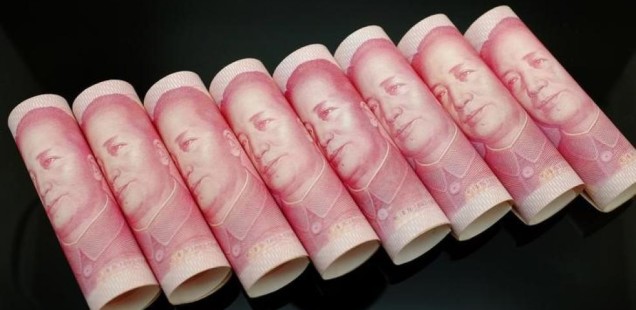
Misreading China Leads to Another Foolish Market Rout
As the global rout in stocks last week reminds us, markets are always reliable. We can count on investors to overreact to events they don’t understand, including a plump scapegoat like China.
By the S & P Global Broad Market Index, equities exchanges dropped $2.23 trillion in value in the first week of 2016. This followed a similar frenzy just last summer, when U.S. stocks alone lost $2.1 trillion in six sessions.
China was the alleged culprit on both occasions. In Pavlovian fashion, selloffs on the Shanghai exchanges unleashed stampedes on trading floors and wave upon wave of sweaty-palmed worry: The technocrats in Beijing are incompetent. They aren’t committed to free-market reforms. As China’s economy transitions, it will never pull off a soft landing.
Related: Soros Warns We May Be Repeating 2008 Crisis
All the money investors surrendered is sheer wastage. As to what passes for logic in the markets, it’s a dumb mix of incomprehension, paranoia, and the habits of lemmings. I would have written “hold” advisories last week for half the amount the markets gave up and everyone would now be trillions to the good.
This column’s contribution to a saner week in global markets comes by way of four observations.
The markets overreacted. Hell broke loose, of course, when China reported new manufacturing data a week ago Monday, the first trading day of the year. The Caixin Purchasing Managers’ Index dropped to 48.2 in December, below market expectations but down only marginally from 48.6 in November. The Shanghai selloff began instantly, and global markets followed.
It made no sense from the start. “While the reading was the lowest in three months,”Trading Economics sensibly observed, “factory activity has been in a contraction since March.”
Equally, if the Chinese economy is to transition from manufacturing and investment into one led by consumption and services, as all the world urges, these stats are to be expected, if not welcomed. Later in the week, Beijing reported that consumer prices rose by 1.6 percent in December, marginally higher than the previous month but not a rate suggesting any surge in consumer demand.
Related: Is China or the Middle East a Bigger Threat to Stocks?
Again, where’s the surprise? There would be none if investors had kept in mind that China’s per capita income, at roughly $3,900, is a third the global average and that China’s consuming middle class is measured at about 109 million. It’s a nice number, putting China statistically ahead of the U.S., but 1 billion Chinese have yet to make it.
In the course of all this, the yuan dropped against the dollar last week—1.5 percent in onshore trading, 1.7 percent in offshore markets. Given the circumstances, so what? This is simply not grounds for panic selling—or calls to reverse the I.M.F.’s November decision to include the yuan in its global basket of currencies.
“China’s economic fundamentals are strong,” the State Administration of Foreign Exchange, said in a weekend statement. “Foreign reserves are relatively abundant and the financial system is largely stable and healthy.”
Advice to investors: Take SAFE at its word.
Related: How a Soaring Dollar Forced China to Devalue Its Currency
Global markets misread Shanghai. Asian share markets have a very different relationship to the real economy than markets in the West do. They are less about capital formation than speculation and retain a marked casino-like character they grow out of only slowly. Emphatically, they cannot be read to reflect fundamentals.
Western investors need to understand this fundamental difference. Last week they seemed to think panic sellers and speculators in Shanghai had an inside line to some prevalent incompetence in Beijing’s ministries and the People’s Bank of China. I’ve heard this a hundred times but never seen any evidence of it.
The take-home: We’re watching a huge, gradual transition in China. Share traders are to this process as mosquitoes skimming a pond.
We’re scapegoating again. The underlying reality in equities markets is that a Fed-fueled rally that began seven years ago is unwinding quite apart from anything China does. “We frontloaded a tremendous rally starting in March 2009,” Dick Fisher, former president of the Dallas Fed, remarked just as shares crashed last week. “I would not blame this selloff on China.”
Related: The 8 Worst-Performing Dow Stocks of 2015
Fisher had earlier predicted a 10 percent to 20 percent correction. “I could also see a flat market for quite some time,” he added last week, “digesting that enormous return the Fed engineered for six years.”
That’s closer to reality. But isn’t China responsible for the glut in commodities markets and the consequent collapse of prices?
The answer’s another question: Why weren’t commodities companies smart enough to curtail their investments years ago, when the mainland made clear it was serious about transitioning away from manufacturing?
Were the strategic planners asleep at their desks?
We’re addicted to illusions. Westerners, notably Americans, have finally dropped the thought that foreign investment and exposure to market mechanisms will ineluctably lead to democracy in China. But we now await some kind of 180 by which Beijing abandons the strong state role characteristic of all major non-Western economies. Unless they introduce American-style free-market reforms, China’s leaders are doomed to fail.
Not in a thousand years will this prove out. Economic policy, like stock markets, tax regimes, and regulatory frameworks always has a marked cultural dimension. They are in part artifacts that express a tradition.
Waiting for this imagined evolution is a waste of time. It also sustains a certain blindness as we look across the Pacific and sets us up for future disappointments and another round of costly confusion and fear.

